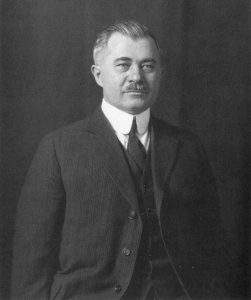The Ford Model T and its Hungarian inventors

József Galamb, along with Jenő Farkas, was a Hungarian engineer who got the chance of working for Henry Ford on his Model T, the most influential Ford Model.
Galamb was born in Makó, a Hungarian town famous for its onions. He received his diploma in mechanical engineering at the Budapest Industrial Technology Engineering Course, (the predecessor of the present-day Óbuda University Bánki Donát Polytechnical College) in 1899. Then he started working at the Steel Engineering Factory in Diósgyőr as a draftsman. He served one year in military service, and afterwards, Galamb worked at the Hungarian Automobile Co., where he won a postgraduate scholarship to Germany, where he ended up at Adler assembling engines.

After finishing his services at the navy, he went to see the world;
he travelled to Vienna, Dresden, Berlin, Hamburg and Bremen.
In 1903 he worked in many German cities as a skilled worker, he got the best education at Adler in Frankfurt. He was hired to assemble automotive engines in a process in which each engine was built completely by one man.
When he found out about the 1904 American Auto World Fair in St. Louis, he decided to travel there.
He used his savings to travel to America by ship in October 1903.
After two months in New York, he found employment as a toolmaker at the Westinghouse Corporation in Pittsburgh. Although he planned to go back to Germany in 1904, instead, as his English was getting better, and he wanted to get into the car industry, he joined the Stearns Automobile Company in Cleveland as a carburettor maker.
He visited a friend in Detroit, and eventually, he decided to settle down there. Galamb applied for work at the Silent Northern plant, the reorganised Ford-Cadillac plant and the Ford Piquette Avenue Plant, but, at the same time, a colleague from Germany offered him a job at his factory. Cadillac also called him in for a practical test in order to get an $18 job, but by that time, Henry Ford got him for $20.
And so he joined the Ford Motor Company (twenty-four years old at that time) as a designer in December 1905.
The Ford Motor Company had 300 employees at the time assembling the Ford Model A from purchased parts. József Galamb redesigned the cooling system for the Model N, and subsequently, he became the chief designer of the company and devised many of the parts of the famous Model T. Also, Galamb was working together with C. Harold Wills, one of Ford’s first employees and shareholders, and creator of the blue oval logo.
In 1917, another Hungarian engineer, Jenő Farkas also started working at Ford. Progress sped up at the factory. It is hard to tell who invented which part of the Model T, since both of the Hungarian engineers took their part in the process. From 1915 Galamb worked on the Fordson tractor, which was meant to be operated by women.
In 1921 he founded a scholarship for the poor students of his native town who wished to take up higher education at trade school,
while Farkas helped with the Model A and the Ford V8.
During World War I he was busy designing military hardware, e. g. Anti-Submarine detection systems. He visited Hungary many times, lecturing at the Association of Hungarian Engineers and Architects. During World War II on Ford’s suggestion, he designed a small six-cylinder car, which was completed in 1942. On doctor’s orders, he retired from active work in 1944.
As the political situation was getting worse in Hungary, Galamb had to stop visiting his relatives back there. He died in 1955 in Detroit.
Featured Image: Wikicommons by Wolf Meusel
Source: Daily News Hungary, jalopnik.com





